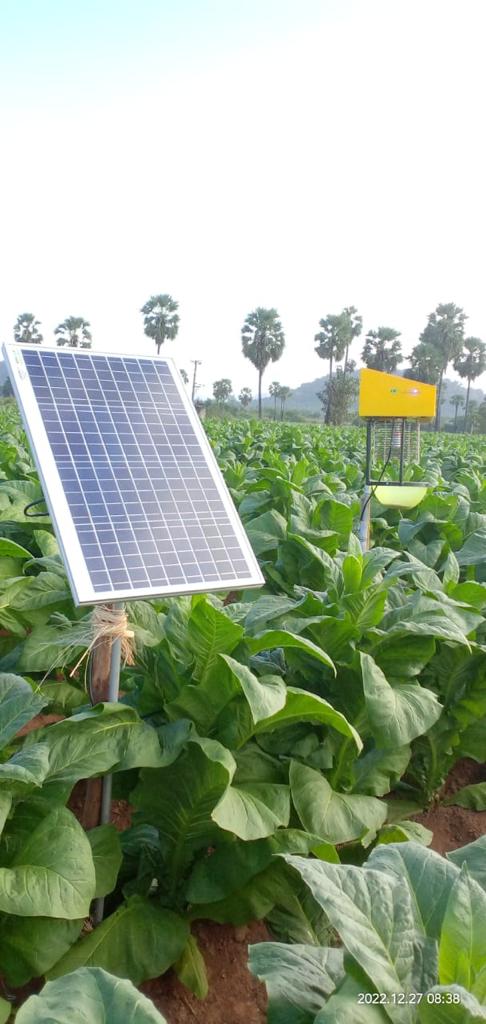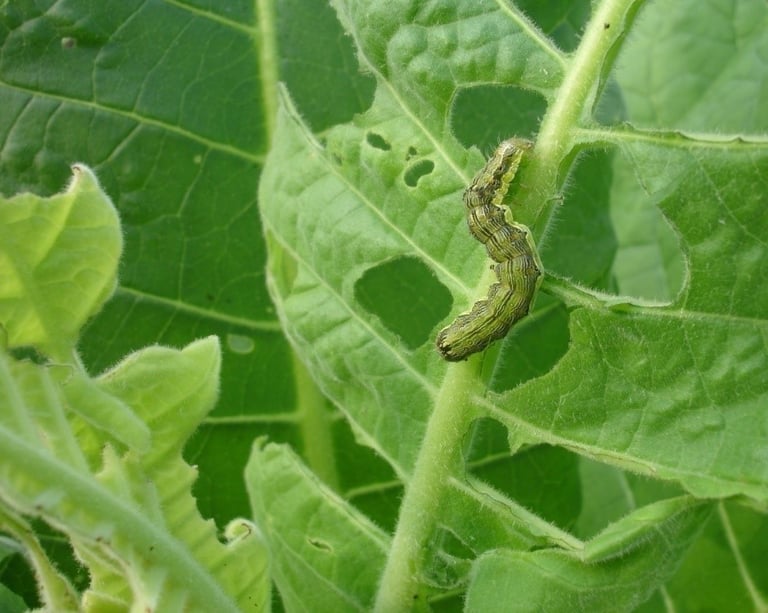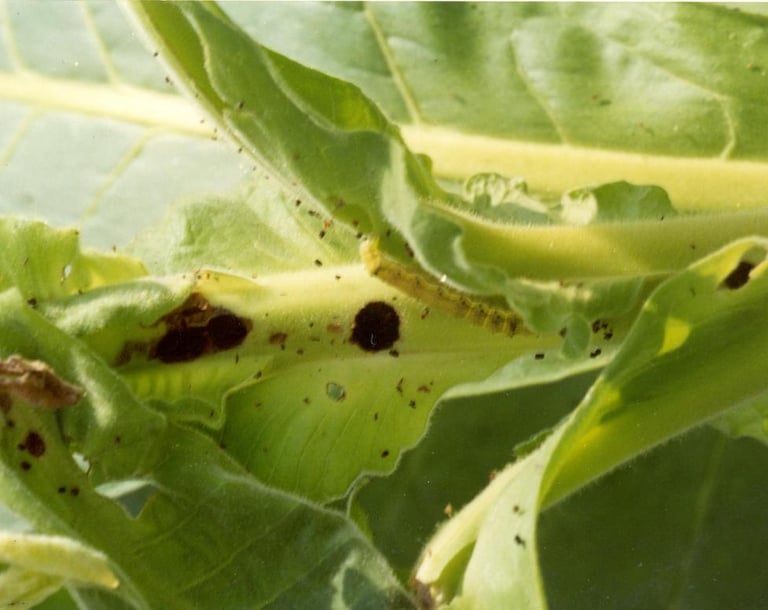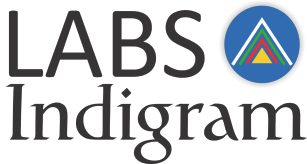Tobacco Cultivation with Novel IPM Crop Protection Solution
There are limitations on the use of pesticides in tobacco cultivation as most of the tobacco importing countries prefers pesticide residue free tobacco and follows stringent pesticide residue level norms. Presence of pesticide residues in tobacco increases health risk of both active and passive smokers, apart from the imminent potential health problems associated with it. As India grows FCV tobacco mainly for export, it becomes essential to follow pesticide residue level norms of importing countries and cultivate tobacco with minimal use of pesticides.
Tobacco is a species in the genus Nicotiana, of the plant family Solanaceae, the Nightshade family. The family includes many important vegetable crops such as tomato, potato, pepper, and eggplant. Most commercial tobaccos cultivated today belong to Nicotiana tabacum L., a plant with a large, stout hairy stem that grows from 1–2 m tall.
Tobacco production is primarily concentrated in regions with a mild and sunny climate, which is suitable for the cultivation of tobacco plants. China, India, and Brazil were rated among the leading producers worldwide, followed by the United States.
In India, tobacco is grown on 0.45 M ha of area (accounting for only 0.31% of net cultivated area in the country) with 750 M kg production. The world tobacco production is ~7 billion kg, China occupying the first place with 2.35 billion kg. There are ten distinct tobacco types grown in 15 states of the country which include cigarette (FCV, burley, Oriental) and non-cigarette types (Bidi, chewing, hookah, natu, cheroot, cigar and HDBRG). India stands second in tobacco production and exports in the world.
Major insect pest affecting tobacco production in India are:
Leaf eating caterpillar: Spodoptera litura Fab. (Lepidoptera: Noctuidae)
Whitefly: Bemisia tabaci Genn (Hemiptera: Aleyrodidae)
Stem borer: Scrobipalpa heliopa Low. (Lepidoptera: Gelechiidae)
Gram pod borer/bud worm/capsule borer: Helicoverpa armigera Hub. (Lepidoptera: Noctuidae)
Tobacco aphid: Myzus persicae subsp. Nicotianae Black (Hemiptera: Aphididae)
Apart from above mentioned major insect pest national significance in India, tobacco crop is also affected by other insect pests as well.
Few of the important viral diseases affecting tobacco crop are:
Tobacco mosaic disease: Tobacco mosaic virus (mechanical transmission)
Tobacco leaf curl disease: Tobacco leaf curl virus (Vector - Bemisia tabaci)
Cucumber mosaic disease: Cucumber mosaic virus (Vector – Aphid)
Tobacco ring spot disease: Tobacco ring spot virus (Vector- Nematode)
Insect pests, the vectors of viral diseases, plays major role in spreading viral diseases across the tobacco field.
Limitations on pesticides use in tobacco cultivation
There are limitations on the use of pesticides in tobacco cultivation as most of the tobacco importing countries prefers pesticide residue free tobacco and follows stringent pesticide residue level norms. Presence of pesticide residues in tobacco increases health risk of both active and passive smokers, apart from the imminent potential health problems associated with it. As India grows FCV tobacco mainly for export, it becomes essential to follow pesticide residue level norms of importing countries and cultivate tobacco with minimal use of pesticides.
Looking at the restrictions on use of synthetic pesticides, at Ai-Genix we have come up with novel IPM solution for tobacco crop protection that ends farmer’s reliance on crop protection chemicals and helps them to produce pesticide residue free tobacco. The crop protection solutions, commercially made available by Ai-Genix plays important role in keeping the damage to the tobacco well below economic threshold level.
IPM solutions @ Ai-Genix® for tobacco insect pest control
BraveHawk® Monza – An Ai-Enabled insect pest control device is quite efficient and effective to control the population of Spodoptera litura, Bemisia tabaci, Scrobipalpa heliopa, Helicoverpa armigera withoout threat to the benefical insects in tobacco farm ecosystem.
Biological Control Agent - Chrysoperla Carnea
For management tobacco aphid (Myzus persicae subsp. Nicotianae) we recommend to release the Green Lacewing (Chrysoperla Carnea) in addition to the deployment of BraveHawk series device.
The other insect pests that affects the tobacco crop production are
Acrida exaltata, Agrotis ipsilon, Argyrogramma signata, Atractomorpha crenulate, Bledius gracillicornis, Chloridea (=Heliothis) virescens, Conoderus vespertinus, Cyrtacanthacris tatarica Epitrix hirtipennis, Frankliniella fusca, Frankliniella occidentalis, Manduca sexta, Myzus persicae Phenacoccus solenopsis , Phyllophaga spp., Popillia japonica, Scrobipalpa (Gnorimoschema) heliopa, Spodoptera eridania, Spodoptera exigua, Trichoplusia ni.
To know more about the control insect pests write an email to the author of this blog.















